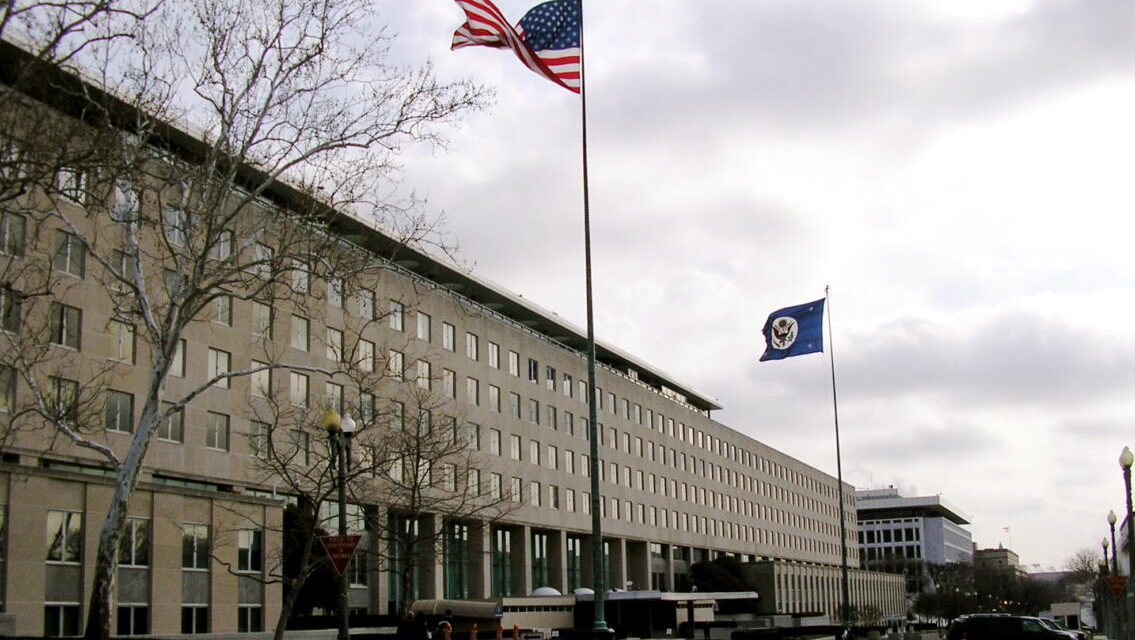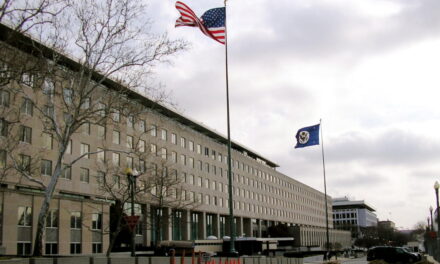China’s ‘great wall of sand’ unifies allies in Pacific, says US naval chief
And China’s island-building has also engendered a rare outbreak of foreign policy bipartisanship in Washington.
“It’s totally unnecessarily to build a stationary aircraft carrier in the South China Sea right off the coast of nation states,” said Devin Nunes, the Republican chair of the powerful US House of Representatives intelligence committee, suggesting that China’s artificial islands were intimidating but not militarily effective.
“They’ve managed to take long-time complicated relationships from the US and make them into allies,” said Mr Nunes, speaking also on the sidelines of the US Dialogue in Melbourne.
China has accused the US Pacific Command of “militarising” the South China Sea and endeavouring to “sow discord” between China and its maritime neighbours.
Admiral Swift’s predecessor, Admiral Harry Harris, sounded the alarm about “the Great Wall of Sand” that China was building across busy sea lanes in the South China Sea, in a speech to the Australian War Memorial on March 31.
Continued below the fold …
The Australian-U.S. alliance is a celebrated one. Our two nations have worked, fought, bled and died together. We fought in World Wars I and II. We fought communism in the hot wars of Korea and Vietnam , and the Cold War throughout the latter half of the last century. We fought together in the Gulf War. And for the last decade we’ve fought side-by-side in the long wars in Afghanistan and Iraq.
Peter (Jennings) was right when he opened the conference this morning and said that Australia’s allies and friends need Australia to play a large role in global security affairs. But I would go a step further and say that Australia needs Australia to play a leading role in global security, and indeed you have.
Our coalition fight against ISIL is a perfect example. As Foreign Minister Julie Bishop recently said, ISIL is an organization that “seeks to drag the world back to the Dark Ages.” ISIL threatens all law-abiding freedom-loving nations, including Australia. So I applaud Australia’s leadership in this fight.
Defense Minister Andrews commented this morning, and I quote, “Australia is a maritime nation and we require maritime security.” Unquote. He could have said the same thing about the U.S. Both of our countries have served together on the high seas, in operations and exercises around the world, for the last century. We sail together as part of multi-national coalitions. Just this week, HMAS Success joined NATO’s counter-piracy Operation Ocean Shield to work with partner nations in the Gulf of Aden and Indian Ocean. And I applaud Australia’s 29th deployment with Combined Task Force 150 to help maintain maritime security in the Horn of Africa region.
○ US-China tensions rise over Beijing’s ‘Great Wall of Sand’
US commander not confident North Korea will refrain from nuclear assault | The Guardian |
Harris accepted responsibility for “confusion” stemming from the Vinson deployment, which Trump and the US navy highlighted last week even though the carrier group was still thousands of miles from the peninsula. The Vinson, Harris said, is now in the Philippine Sea, placing its weapons and aircraft within “striking range” of North Korea.
Harris acknowledged that possible reprisals stemming from a strike against North Korea would place at risk the lives of millions of Koreans in Seoul – as well as the 24,000 US troops in South Korea.
“I would say what we’re faced with is that… a lot more Koreans and Japanese and Americans dying if North Korea achieves its nuclear aims and does what [Kim Jong-un] has said it’s going to do,” Harris said.
○ Credibility: Trump’s Very Powerful Armada Heading South
Freedom of navigation patrols may end ‘in disaster’: Chinese admiral | Reuters |
Freedom of navigation patrols carried out by foreign navies in the South China Sea could end “in disaster”, a senior Chinese admiral has said, a warning to the United States after last week’s ruling against Beijing’s claims in the area.
China has refused to recognize the ruling by an arbitration court in The Hague that invalidated its vast territorial claims in the South China Sea, and did not take part in the proceedings brought by the Philippines. It has reacted angrily to calls by Western countries and Japan for adherence to the decision.
China has repeatedly blamed the United States for stirring up trouble in the South China Sea, a strategic waterway through which more than $5 trillion of trade moves annually.
China, Brunei, Malaysia, the Philippines, Taiwan and Vietnam all have rival claims, of which China’s is the largest.
The United States has conducted freedom of navigation patrols close to Chinese-held islands, to Beijing’s anger, while China has been bolstering its military presence there.
○ Freedom of Navigation Operations (FONOPs)
US-Australian military exercise rehearses for war against China | WSWS – 2013 |
The Labor government’s commitment to the Obama administration’s “pivot” to Asia and preparations for a military confrontation with China has been on display since July 15 in the form of a major exercise named “Talisman Saber.” As many as 22,000 American personnel and 16 ships, alongside up to 10,000 Australian personnel and 11 ships, are currently rehearsing in northern Australia and the Coral Sea for the outbreak of a war.
Talisman Saber exercises have been staged every two years since 2005. They are viewed in the Pentagon and its Pacific Command (PACOM) as one of the most important exercises held in the Asian region. PACOM refers to them as the “primary training venue for Commander Seventh Fleet as a Combined Task Force (CTF) in a short warning, power projection, forcible entry scenario” and “a key opportunity to train Australian and US combined forces in mid to high-intensity combat operations.”
This year’s exercise involves the majority of the US Seventh Fleet, including its command and control vessel, the Blue Ridge, the massive amphibious assault ship Bonhomme Richard, which can deploy close to 2,000 marines, and the aircraft carrier George Washington. The Australian Navy frigate Sydney, which was “embedded” with the Seventh Fleet earlier in the year, is operating as part of the George Washington’s escort, as well as another frigate, the Perth. Australian submarines and support ships are also rehearsing how to integrate rapidly into the far larger US fleet.
US Navy tests amphibious concept at Talisman Saber exercise | Defense News |




